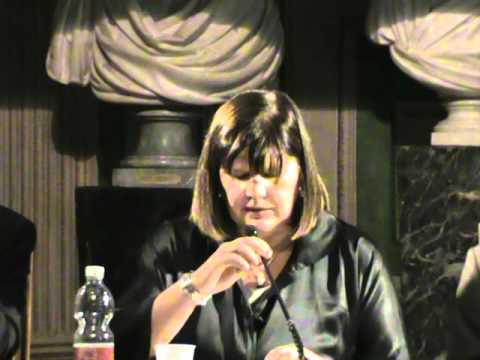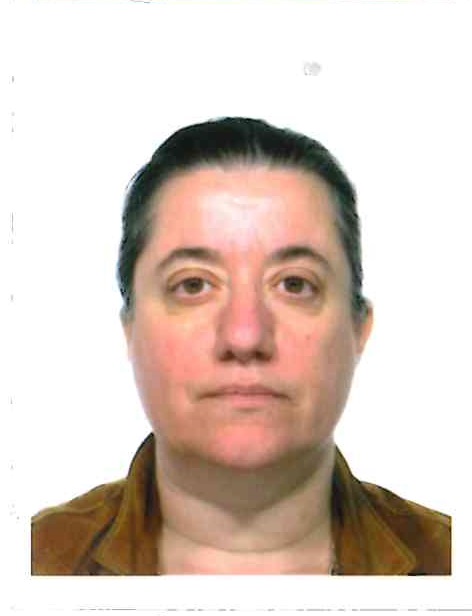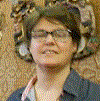Studying at the University of Verona
Here you can find information on the organisational aspects of the Programme, lecture timetables, learning activities and useful contact details for your time at the University, from enrolment to graduation.
Academic calendar
The academic calendar shows the deadlines and scheduled events that are relevant to students, teaching and technical-administrative staff of the University. Public holidays and University closures are also indicated. The academic year normally begins on 1 October each year and ends on 30 September of the following year.
Course calendar
The Academic Calendar sets out the degree programme lecture and exam timetables, as well as the relevant university closure dates..
| Period | From | To |
|---|---|---|
| I SEMESTRE | Oct 3, 2016 | Jan 21, 2017 |
| II SEMESTRE | Feb 27, 2017 | Jun 10, 2017 |
| Session | From | To |
|---|---|---|
| Lingue - SESSIONE INVERNALE | Jan 23, 2017 | Feb 25, 2017 |
| Lingue - SESSIONE ESTIVA | Jun 12, 2017 | Jul 29, 2017 |
| Lingue - SESSIONE AUTUNNALE | Aug 21, 2017 | Sep 23, 2017 |
| Session | From | To |
|---|---|---|
| Lingue - Sessione di laurea invernale | Apr 3, 2017 | Apr 8, 2017 |
| Lingue - Sessione di laurea estiva | Jul 10, 2017 | Jul 15, 2017 |
| Lingue - Sessione di laurea autunnale | Dec 18, 2017 | Dec 21, 2017 |
| Lingue - sessione di laurea invernale | Mar 23, 2018 | Mar 29, 2018 |
| Period | From | To |
|---|---|---|
| FESTA DI OGNISSANTI | Nov 1, 2016 | Nov 1, 2016 |
| FESTA DELL'IMMACOLATA CONCEZIONE | Dec 8, 2016 | Dec 8, 2016 |
| Vacanze Natalizie | Dec 23, 2016 | Jan 7, 2017 |
| Vacanze Pasquali | Apr 14, 2017 | Apr 18, 2017 |
| Festa della Liberazione | Apr 25, 2017 | Apr 25, 2017 |
| Festa dei Lavoratori | May 1, 2017 | May 1, 2017 |
| FESTA DEL SANTO PATRONO SAN ZENO | May 21, 2017 | May 21, 2017 |
| Festa della Repubblica | Jun 2, 2017 | Jun 2, 2017 |
| Vacanze Estive | Aug 14, 2017 | Aug 19, 2017 |
| Description | Period | From | To |
|---|---|---|---|
| ANNUALE | ANNUALE | Oct 3, 2016 | Jun 10, 2017 |
Exam calendar
Exam dates and rounds are managed by the relevant Foreign Languages and Literatures Teaching and Student Services Unit.
To view all the exam sessions available, please use the Exam dashboard on ESSE3.
If you forgot your login details or have problems logging in, please contact the relevant IT HelpDesk, or check the login details recovery web page.
Should you have any doubts or questions, please check the Enrollment FAQs
Academic staff
 valentina.adami@univr.it
valentina.adami@univr.it
 paola.bellomi@univr.it
paola.bellomi@univr.it
 daniele.beltrame@univr.it
daniele.beltrame@univr.it
 riccardo.cella@univr.it
riccardo.cella@univr.it
 elisa.dallarosa@univr.it
elisa.dallarosa@univr.it
 sara.dattoma@univr.it
sara.dattoma@univr.it
 federico.febbroni@univr.it
federico.febbroni@univr.it
 veronica.gobbato@univr.it
veronica.gobbato@univr.it
Hernandez Arocha Hector Eutimio
 hector.hernandez@univr.it
hector.hernandez@univr.it
 gianpaolo.lazzer@univr.it
gianpaolo.lazzer@univr.it
 stefania.montemezzo@univr.it
stefania.montemezzo@univr.it
 anna.morbiato@unive.it
anna.morbiato@unive.it
 chunye.niu@univr.it
chunye.niu@univr.it
 sara.paolini@univr.it
sara.paolini@univr.it
 valentina.savietto@univr.it
valentina.savietto@univr.it
 fabioantonio.scrignoli@univr.it
fabioantonio.scrignoli@univr.it
 alice.valdesalici@univr.it
alice.valdesalici@univr.it
Study Plan
The Study Plan includes all modules, teaching and learning activities that each student will need to undertake during their time at the University.
Please select your Study Plan based on your enrollment year.
1° Year
| Modules | Credits | TAF | SSD |
|---|
German literature and culture 1
German literature and culture 1
2° Year activated in the A.Y. 2017/2018
| Modules | Credits | TAF | SSD |
|---|
Italian literature and culture
Geography of communication and international trade
Modern and Contemporary Economic History
Theory and Techniques of communication
English literature and culture 2
German literature and culture 2
Spanish literature and culture 2
English literature and culture 2
German literature and culture 2
Spanish literature and culture 2
3° Year activated in the A.Y. 2018/2019
| Modules | Credits | TAF | SSD |
|---|
Comparative and European Public law
Principles of international marketing
| Modules | Credits | TAF | SSD |
|---|
German literature and culture 1
German literature and culture 1
| Modules | Credits | TAF | SSD |
|---|
Italian literature and culture
Geography of communication and international trade
Modern and Contemporary Economic History
Theory and Techniques of communication
English literature and culture 2
German literature and culture 2
Spanish literature and culture 2
English literature and culture 2
German literature and culture 2
Spanish literature and culture 2
| Modules | Credits | TAF | SSD |
|---|
Comparative and European Public law
Principles of international marketing
| Modules | Credits | TAF | SSD |
|---|
Legend | Type of training activity (TTA)
TAF (Type of Educational Activity) All courses and activities are classified into different types of educational activities, indicated by a letter.
English literature and culture 2 [CInt] (2017/2018)
Teaching code
4S002910
Teacher
Coordinator
Credits
9
Language
English
Scientific Disciplinary Sector (SSD)
L-LIN/10 - ENGLISH LITERATURE
Period
Semester 1 dal Oct 2, 2017 al Jan 20, 2018.
Learning outcomes
The module aims at offering an overview of seventeenth- and eighteenth-century English literature and culture, as well as at presenting the students with the basics of textual and literary genre analysis.
On successful completion of the module, students will achieve a good knowledge of the cultural context in which the texts included in the programme were composed. They will be able to develop a coherent and detailed interpretation of the texts, apply key methods and concepts relevant to textual analysis, and provide a plausible critical interpretation in a register and style that serve the context and intention.
Program
Original sin(s) and fictional conversions. From Milton to Richardson.
The module will deal with a selection of poetic and narrative late seventeenth- and eighteenth-century texts on the basis of the changed (and changing) notions of sin and conversion, and their representation, looking at their various literary, religious, cultural, and political aspects. Different genres will be taken into account: from epic, to spiritual autobiography, to the novel.
The programme consists in three parts: 1. Primary texts, 2. References and 3. Handbook.
Language: lectures will be in English.
Please be advised: further details on required readings and general information on bibliographical material will be provided during classes.
Futher material will be available for download from the MOODLE e-repository.
BIBLIOGRAPHY
1. Primary texts
- J. Milton, Paradise Lost [Books I & IX], any English or parallel edition.
- J. Bunyan, Grace Abounding to the Chief of Sinners, any English edition.
- D. Defoe, Moll Flanders, (ed. by D. Blewett), Penguin, 2003.
- S. Richardson, Pamela, (ed. by M. Doody), Penguin, 2003.
2. References
- B. Lewalsky, “The Genres of Paradise Lost”, in The Cambridge Companion to John Milton, ed. by D. Danielson, CUP, 1999, pp. 113-129.
- D. Danielson, “The Fall and Milton’s Theodicity”, in The Cambridge Companion to John Milton, ed. by D. Danielson, CUP, 1999, pp. 144-159.
- R. Bell, “Metamorphoses of Spiritual Autobiography”, ELH, 44:1, 1977, pp. 108-126 (available on Jstor – see MOODLE for instructions).
- N. Rosenfeld, “The Tempter in Grace Abounding”, in The Human Satan in Seventeenth-Century English Literature, Ashgate, 2008, pp. 31-52.
- R.S. Beal, “Grace Abounding to the Chief of Sinners: John Bunyan’s Pauline Epistle”, Studies in English Literature, 1500-1900, 21:1, 1981, pp. 147-160 (available on Jstor – see MOODLE for instructions)
- I. Watt, The rise of the novel: studies in Defoe, Richardson and Fielding, Penguin, 1972, pp. 9-59 e 93-173.
- S.C. Conboy, “Fabric and Fabrication in Richardson’s Pamela”, ELH, 54:1, 1987, pp. 81-96 (available on Jstor – see MOODLE for instructions).
- L. Innocenti, “Introduzione”, in L’invenzione del vero. Forme dell’autenticazione nel romanzo inglese del ’700, a c. di L. Innocenti, Pacini, 2000, pp. 5-19.
- J. Clegg, “Defoe evidence and the eyewitness”, in L’invenzione del vero. Forme dell’autenticazione nel romanzo inglese del ’700, a c. di L. Innocenti, Pacini, 2000, pp. 21-77.
3. Handbook
As regards the literary and cultural context spanning from 1620 to 1830 (from the Revolution to Romanticism), students will refer to:
- A. Sanders, The Short Oxford History of English Literature, Oxford University Press, 2003 (third edition): from chapter 4. “Revolution and Restoration” to chapter 6. “The Literature of the Romantic Period”, included.
| Author | Title | Publishing house | Year | ISBN | Notes |
|---|---|---|---|---|---|
| Jeanne Clegg | “Defoe evidence and the eyewitness”, in L’invenzione del vero. Forme dell’autenticazione nel romanzo inglese del ’700, a cura di Loretta Innocenti | Pacini | 2000 | Testo secondario; pp. 21-77 / Secondary text, pp. 21-77 | |
| Sheila C. Conboy | “Fabric and Fabrication in Richardson’s Pamela”, ELH, Vol. 54, n. 1 | Articolo su rivista / Journal article | 1987 | Testo secondario; pp. 81-96; disponibile su Jstor – v. istruzioni in MOODLE / Secondary text; pp. 81-96; available on Jstor – see MOODLE for instructions | |
| John Bunyan | Grace Abounding to the Chief of Sinners | Qualsiasi edizione inglese / Any English edition | 1666 | Testo primario / Primary text | |
| Rebecca S. Beal | “Grace Abounding to the Chief of Sinners: John Bunyan’s Pauline Epistle”, Studies in English Literature, 1500-1900, Vol. 21, n. 1 | Articolo su rivista / Journal article | 1981 | Testo secondario; pp. 147-160; disponibile su Jstor – v. istruzioni in MOODLE / Secondary text; pp. 147-160; available on Jstor – see MOODLE for instructions | |
| Loretta Innocenti | “Introduzione”, in L’invenzione del vero. Forme dell'autenticazione nel romanzo inglese del ’700, a cura di Loretta Innocenti | Pacini | 2000 | Testo secondario; pp. 5-19 / Secondary text; pp. 5-19 | |
| Robert Bell | “Metamorphoses of Spiritual Autobiography”, ELH, Vol. 44, n. 1 | Articolo su rivista / Journal article | 1977 | Testo secondario; pp. 108-126; disponibile su Jstor – v. istruzioni in MOODLE / Secondary text; pp. 108-126; available on Jstor – see MOODLE for instructions | |
| Daniel Defoe | Moll Flanders, ed. by David Blewett | Penguin | 2003 | Testo primario / Primary text | |
| Samuel Richardson | Pamela, ed. by Margaret Doody | Penguin | 2003 | Testo primario / Primary text | |
| John Milton | Paradise Lost | Qualsiasi edizione inglese / Any English edition | 1674 | Testo primario; Libri I e IX / Primary text; Books I and IX | |
| John Milton | Paradiso Perduto, a cura di Roberto Sanesi | Einaudi | 1992 | Testo primario, da affiancarsi alla lettura del testo in inglese | |
| Barbara Lewalsky | “The Genres of Paradise Lost”, in The Cambridge Companion to John Milton, ed. by Dennis Danielson | Cambridge University Press | 1999 | Testo secondario; pp. 113-129 / Secondary text; pp. 113-129 | |
| Ian Watt | The Rise of the Novel | Penguin | 1972 | Testo secondario; pp. 9-59 e 93-173; Secondary text; pp. 9-59 and 73-193 | |
| Andrew Sanders | The Short Oxford History of English Literature | Oxford, Oxford University Press | 1994 | Manuale; terza edizione; cap. 4-6, inclusi / Handbook: third edition; ch. 4-6, included | |
| Nancy Rosenfeld | “The Tempter in Grace Abounding”, in The Human Satan in Seventeenth-Century English Literature | Ashgate | 2008 | Testo secondario; pp. 31-52 / Secondary text; pp. 31-52 |
Examination Methods
The exam will consist in an oral discussion (in English) that will test the knowledge of the module’s topics (texts, authors, and genres) and the literary and cultural context (3. Handbook; main authors and movements from 1620 to 1830) as well as the use of an approriate vocabulary. Students may be required to read and comment on passages taken from primary texts (Bibliography: 1. Primary texts).
There will be no mid-term tests.
Type D and Type F activities
To discover all the teaching activities accredited by the foreign teaching college click here
Career prospects
Module/Programme news
News for students
There you will find information, resources and services useful during your time at the University (Student’s exam record, your study plan on ESSE3, Distance Learning courses, university email account, office forms, administrative procedures, etc.). You can log into MyUnivr with your GIA login details: only in this way will you be able to receive notification of all the notices from your teachers and your secretariat via email and soon also via the Univr app.
Student login and resources
Gestione carriere
Assegnazione tutore
Attività accreditate D/F
Calendario didattico dettagliato
Cambio lingua curriculare
Competenze informatiche
Competenze linguistiche (prima e seconda lingua)
Competenze linguistiche in triennale (terza lingua CFU F)
Compilazione del piano didattico
Corso di Lingua portoghese
Erasmus+ e altre esperienze all'estero
Linguistic training CLA
Presentazione dei corsi di studio e Open day
Graduation
List of theses and work experience proposals
| Stage | Research area |
|---|---|
| PROGETTO MAMBRINO Stage per bibliografia | Various topics |
Saperi minimi
Stage e tirocini
Nel piano didattico della laurea triennale in Lingue per il turismo e il commercio internazionale (L12) è previsto un periodo di stage obbligatorio (CFU 6) in organizzazioni imprenditoriali.
Le attività di stage sono finalizzate a far acquisire allo studente una conoscenza diretta in settori di particolare interesse per l’inserimento nel mondo del lavoro e per l’acquisizione di abilità professionali specifiche.
Le attività di stage sono svolte sotto la diretta responsabilità di un singolo docente presso studi professionali, enti della pubblica amministrazione, aziende accreditate dall’Ateneo veronese.
I crediti maturati in seguito ad attività di stage saranno attribuiti secondo quanto disposto nel dettaglio dal “Regolamento d’Ateneo per il riconoscimento dei crediti maturati negli stage universitari” vigente.
- Tutte le informazioni in merito agli stage per futuri studenti sono disponibili alla pagina Stage e tirocini.
- Tutte le informazioni in merito agli stage per studenti iscritti sono pubblicate in MyUnivr - come fare per - stage e tirocini.
- Tutte le informazioni in merito agli stage per le aziende sono disponili alla pagina Stage e tirocini per azienze.
Ulteriori informazioni al seguente link https://www.univr.it/it/i-nostri-servizi/gestione-carriere-studenti-lingue-e-letterature-straniere/stage-e-tirocini-lingue-e-letterature-straniere


 +39 045802 8409
+39 045802 8409
























































